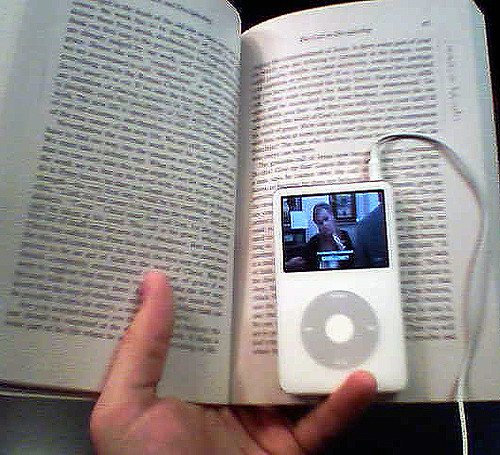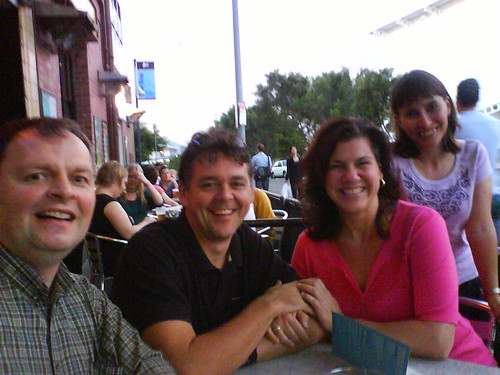In these next few posts, I’m going to try and describe some of the projects we’ve been doing at school lately. My role at PLC Sydney is ICT Integrator, and I very much see it as a role where I support, advise and consult with our classroom teachers about ways to enrich their lessons with technology. It’s a hard line to walk sometimes, since it often forces me to cross that line between giving advice on how to use the technology and giving advice on how to teach. The nature of digital technology makes it a really good fit with the general principles of quality teaching practice… and sometimes that fit is so good that I find it difficult to suggest ways to use technology without also suggesting that the underlying pedagogy should shift to match it. Fortunately, I work in a school where most of our teaching staff are willing to take such suggestions on board, be it simply just regarding the use of technology, or to actually shift they way they approach the job of teaching.
Our Year 9 Geography class work on a project each year about natural hazards (bushfires, floods, earthquakes, etc). Over the last few years the students have been given a task that requires them to do “research” on one of these phenomena and “create a PowerPoint” about it. I tend to put those terms into quote marks because I find that “research tasks” presented “in Powerpoint” are usually just a formal excuse to get kids to plagiarise (especially when they just hand the PowerPoint file in… they don’t actually present it to the class). When I looked at the task as it stood I was struck by the fact that most of the questions being asked could easily be answered by simply going to Wikipedia and doing a cut and paste.
I tend to use Blooms Taxonomy as a means of getting a quick overview of the quality of the tasks we ask our students to do. It’s not a perfect tool, but it’s nice and easy to apply and it gives a pretty good insight into the degree of higher level thinking that might be involved in a given task. When I looked at the existing task I got the impression that it was made up of fairly low level recall skills.
As an ICT Integrator, one of the questions I always try to start with is “What can we get the students to actually MAKE?” If the word “create” is at the top of the Blooms pyramid, then I reckon that starting with that question is a good way to begin pushing upwards into higher levels of thinking, since making things, by definition, is creating. The term “doing research”, unless it is followed up with actually making something based on that research, rarely takes students much beyond simple cut and paste thinking. To be fair, the other part of the task did involve creating in the sense that the students were “making a PowerPoint”, but it was really just a PowerPoint summary the “research”. Is it any wonder our students tend to plagiarise when we give them tasks like this?
So when I got a request, as the ICT Integrator, to simply visit these classes to remind the kids “how to make a PowerPoint” I felt a little underwhelmed, and I tactfully tried to suggest that perhaps we needed to rethink what we were asking the kids to do, and to come up with something a little more challenging. That’s what I mean when I say I often have to cross the line between just offering ICT support to teachers versus helping them rethink their actual pedagogy.
Anyway, we did end up redesigning the task, and I think that in the end everyone agreed it was a better, more interesting task that made good use of ICT while also covering all the necessary learning outcomes. The students were put into groups of three and their task was to produce a 3-5 minute audio news report about a natural hazard of their choice. (It wasn’t technically a podcast, since we didn’t wrap it in an RSS subscription enclosure, but the recording part was the same general idea as a podcast.)
I suggested that the three students should take on three different roles, each focusing on a different aspect of the natural disaster. The first role was the newsreader, and her job was to announce and describe the key facts about the disaster – what it was, where it happened, and some information about the causes for it… the newsreader essentially set the scene and gave the background about this particular disaster. The second role was that of on-the-scene reporter, and this person was responsible for giving the detailed information about the disaster – who was involved, describing what the scene looked like, how it was being handled by emergency crews and so on. The reporter then conducted an interview with the student playing the third role, that of a victim. The victim’s job was to talk about the human impact of the disaster, and how people were affected. They were to give an insight into the human cost of natural disasters. Together, these three roles would cover all the important aspects of natural disasters. I think it’s important to recognise that all of these aspects are outlined in the syllabus for this unit, and so doing it this way was not just a novelty but a way for students actually engage in the prescribed content in a more interesting, more engaging way.
Of course, in order to play these roles the students needed to write a script. For this, we used GoogleDocs and I taught the students how to write collaboratively using the shared writing tools in GoogleDocs. I should point out that our Year 9 and 10 students are now 1:1 and every student has their own laptop. This is a fairly new thing for our school as the 1:1 program just started this year, so I wanted to ensure we build authentic technology skills into these tasks. Most of the students had never used GoogleDocs before and had never seen the collaborative, shared writing function. I spent a lesson with each class teaching them how to share a document and work on it together, something that they picked up very quickly. That’s the thing about our alleged “Digital Natives”… they actually don’t know a lot of this stuff, but once shown, they tend to pick it up pretty quickly. Once they got the hang of how it worked, they used GoogleDocs as a shared writing space to work on a script together. It worked really well and the students worked in groups of three, all collaborating on the same document, adding, editing and creating together. I think they found it a very valuable tool.
I also spent some time teaching the students the basics of recording sound using Audacity. Once they were shown the core skills of recording a track, then overlaying it with other tracks, music and sound effects, they were ready to get on with producing their radio news reports. Again, it was a skill that most of them had never seen or used before, but after a half hour of training they were all quite proficient at it.
Of course, behind all of this the students DID have to do considerable research. They needed to find out how bushfires spread, what causes cyclones, where droughts are most likely and so on. It’s not that they don’t need to do research – they certainly do. It’s just that once they did the research the task required them to actually use that information to produce something else. The focus was not on the research, but what could be done with the research. Importantly, they were given some room to be creative, admittedly within a reasonably scaffolded framework, but there was still room to be creative… it wasn’t all about just regurgitating the facts they had researched. They needed to take those facts and understand, manipulate and create with them. They were given an opportunity to engage with a range of new technology tools they’d never used before, and ones that will hopefully be of use to them in the future. They were being asked to use the media production capabilities of their shiny new laptops to collaborate and make something original, and not just use it as a glorified typewriter.
As we designed the task, I also made sure it offered the teachers a chance to learn new skills as well. We are really pushing the use of Moodle at the moment, and although most of our teachers are very good at posting resources like Word and PDF documents, the activities part of Moodle is still quite underused. I insisted that the final products of the students – namely a text document with the script and an MP3 file with the finished recording – be submitted as an Assignment in Moodle. There was initially some resistance to this idea, but it forced the teachers to engage with the assignment submission workflow that Moodle offers and exposed them to a number of Moodle features they were not aware of, like the gradebook and the ability to manage student results electronically.
Overall, I have to say the task was a great success. The students seemed to really enjoy the opportunity to work in groups, to make good use of their laptops, to be able to inject a bit of their own personality into the final product. They told me that they liked the opportunity to be a bit more creative and not just hand in yet another boring PowerPoint file or essay. The teachers told me they were impressed with just how engaged the kids were during the task, and that the quality of the finished products was generally quite high.
I’ll put some more posts up in the next few days about some other projects we are working on at school, but at the heart of them I hope there is a common theme. That is, I hope we are getting better at rethinking what we ask our students to produce so they can show us not only what they know, but what they can do with what they know. I’d like to think that we’re working harder to build creativity, choice, authenticity, collaboration and engagement into what we ask of them. I’m pleased to see their laptops being used in ways that leverage the things that digital technology can do, and not to just treat them as a fancy way to take class notes.
Can this task be improved in the future? Sure, but it was a nice step up from the previous task. I’d like to think that the ICT in this case was there as the appropriate tool for supporting a richer learning task, and not just there for the sake of using computers.
Below is a playable sample from one of the groups. I don’t know if it was the best one, since I haven’t actually had a chance to listen to them all, but I picked it more or less and random and thought it was pretty good. I liked the way they used sound effects and mashups recorded from the TV – it shows that they made a special effort. And I like the creative (and slightly humorous) way they introduce the story at the start of their bulletin.

 The school at which I teach,
The school at which I teach, 